Over the last 20 years the context around the consumption and preparation of food has changed remarkably. Today we can say that the ingredients, products, rituals and spaces connected with eating have become true obsessions. The sector continues to grow, along with the time and care we put into nutrition.
An outstanding protagonist of this evolution – Francesca Sarti, founder of the creative group Arabeschi di Latte – tells us more about it. “Food is a ductile material, constantly changing. And its context has changed greatly in recent years. Today food includes a series of cultural and aesthetic connotations that are much more widespread than in the past.”
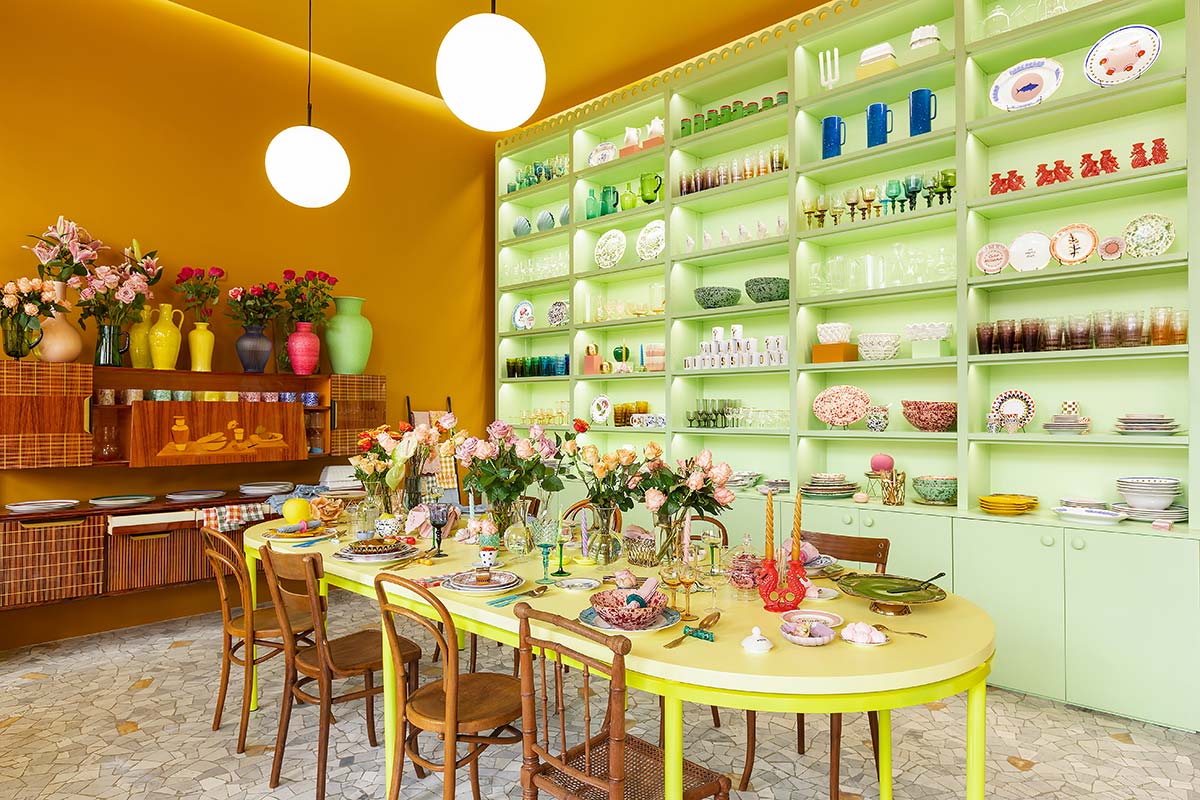
Francesca, who now lives in London, was born in Florence in 1979. After taking a degree in architecture, she began looking at food as creative material, and since then it has always been a part of her work. Today her installations are in demand amongst brands like Fendi, Bitossi, Molteni&C and Gaggenau. She teaches in various schools, and her works have been shown in museums around the world. “When I began to experiment with food I didn’t want to use the expression ‘food design,’” she says, “because it suggested the idea of industrial design applied to food, while my work focused on convivial interaction, socializing, experience.” This English expression, however, has changed over time, and now includes different facets and approaches, addressing not just the form of food, but also the concept of dining, the use of food as a tool of communication.
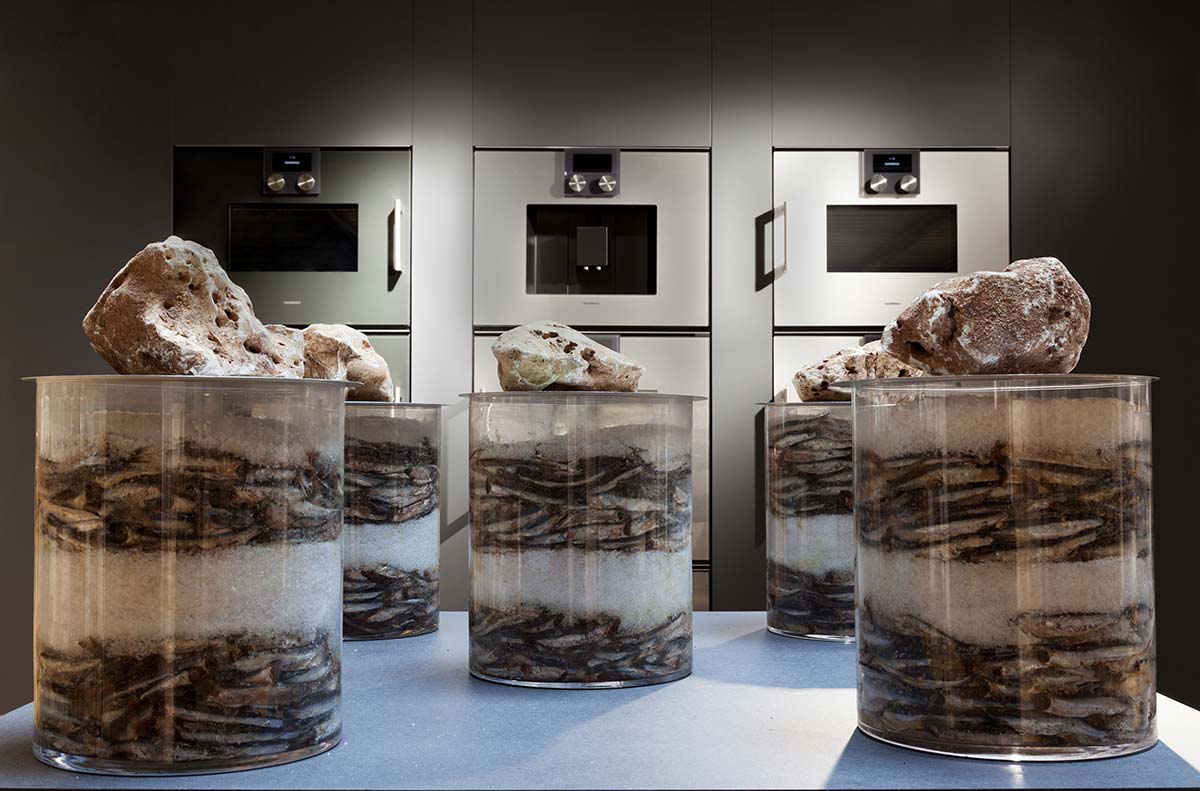
“Arabeschi itself has helped shape this social aspect and the theme of conviviality. I recently started using the term ‘Design conviviality’ to define my work. The convivial moment that holds together the space, the detail, the ingredients.”
“The Arabeschi group has also evolved along these lines. Recently I have started to use the term ‘Design Conviviality’ to define my work. The convivial moment that holds together the space, the detail and the ingredients.” In the first projects of Arabeschi di Latte, there was the idea of breaking up the table: the formal moment of dining was transformed into something else. So the food could be placed on the ground, for a collective couscous, or presented in small kiosks, or served on trolleys. For example, we can consider the nocturnal picnic organized for Galleria Biagiotti in Florence, at the time of the exhibition by Nico Vascellari in 2003. “That moment,” Francesca Sarti recalls, “was fundamental, because it was the first event in which Arabeschi presented a collective happening, where the classic picnic basket contained the food, an idea that is no longer innovative today, although it was at the time.”
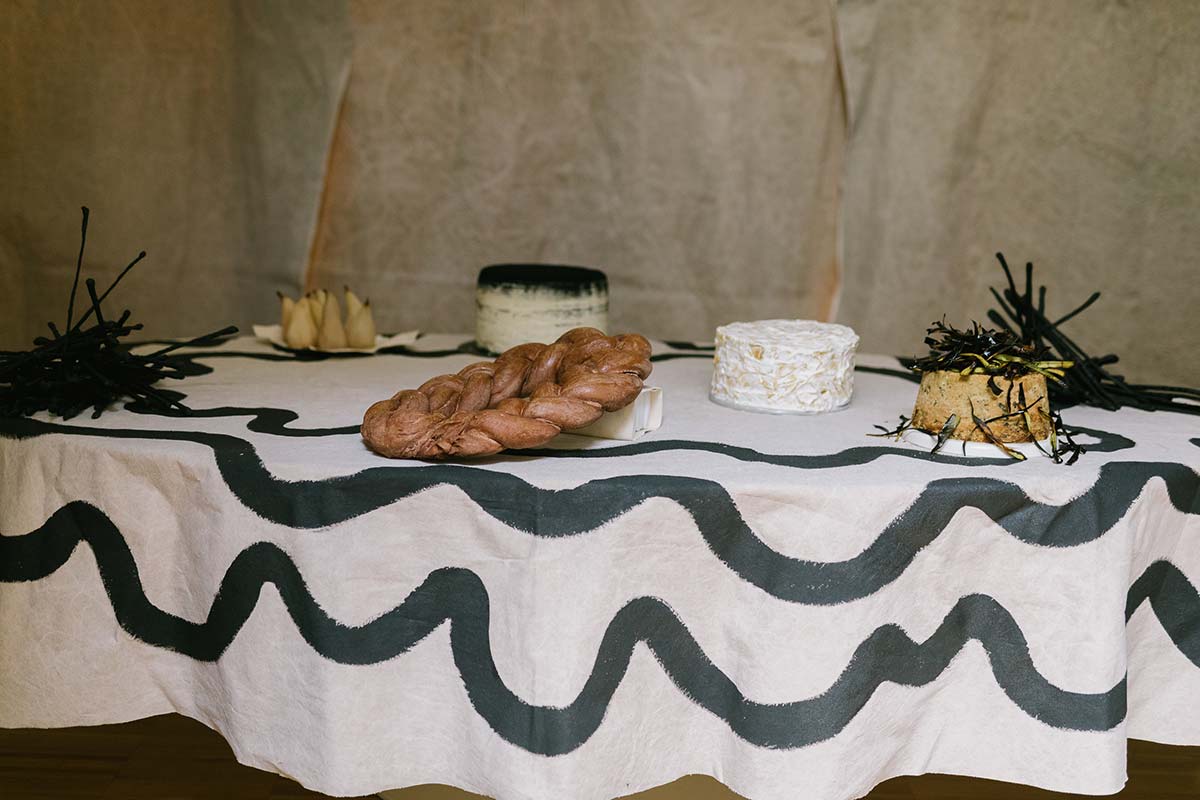
This aspect has changed because with the mutation of habits and fashions, the reflections on the idea of the table have come back to the fore. Other milestones in the progress of Arabeschi di Latte included the BQ interactive dinners, in and around 2007, involving people in food preparation and creating a convivial moment of gathering and exchange: a large collective table, where every person worked with basic tools to make food. The gesture of sharing and the gesture of making are fundamental factors in the work of Arabeschi: while the picnics made the moment of dining less conventional, the BQ interactive dinners – followed by other installations, like the gnocchi bars and the pasta shops, where people prepared their own repasts, have underlined the power of food to establish interpersonal relations.
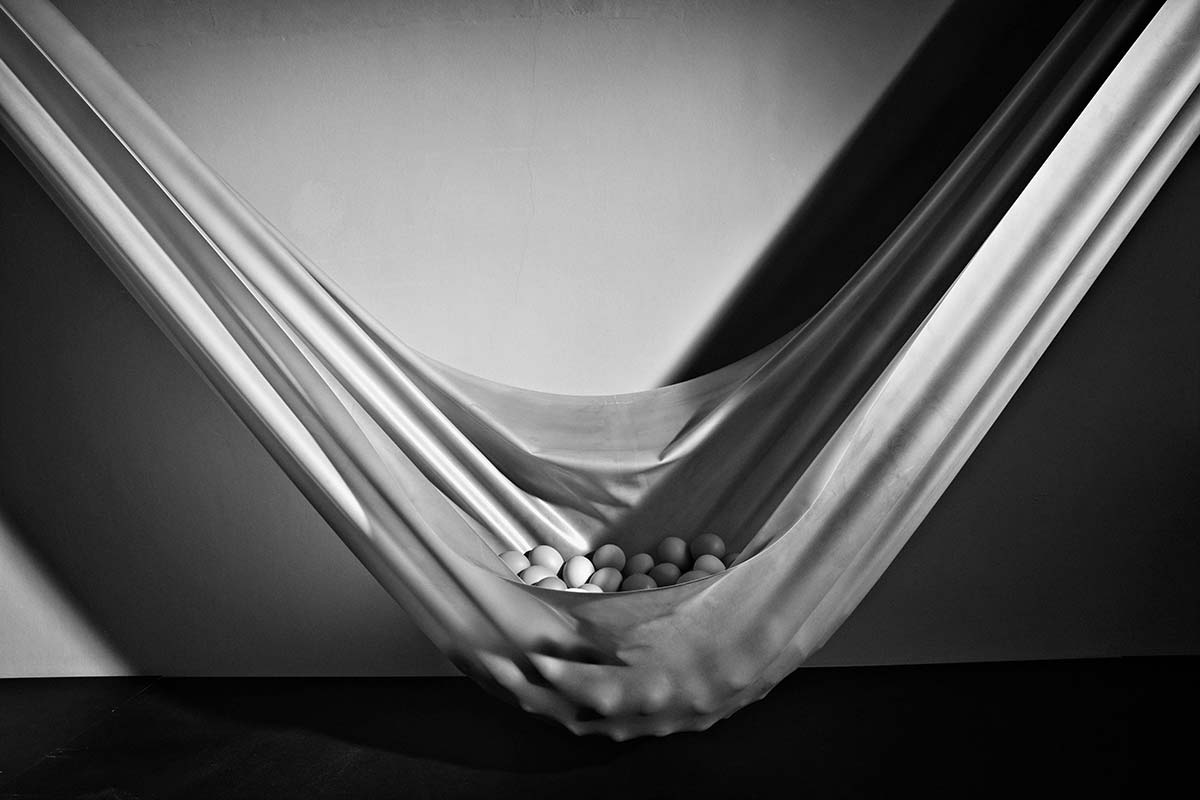
Arriving in 2011, the project Natura Morta with Faye Toogood marked a different phase, in which food made an approach to nature, through the introduction of an aesthetic aspect in the experience, not just connected with accessories and food, but also with the primordial gestures of feeding. “The edible matter was presented in a more brutal way, without the adornments and accessories with which we had played extensively in the previous 10 years,” the designer explains. “The first project of this type was the natura morta (still life) created for Faye Toogood, where food was offered directly with a block of earth, and one could feed directly from the soil.” This approach can also be seen in the installation made for Gaggenau in 2019, where the focus on matter was clear, presenting a cheese traditionally made in plaster – blocks of plaster were offered to the guests, who almost didn’t realize there was food inside.

At this point another fundamental project for Arabeschi comes into play, namely the Edible Material Library, created by Francesca Sarti in 2017: “I wanted people to ask ‘is it cement or food? Is it resin or bread?,’ and I began to play with food as if it were a material, a sort of abstraction,” Sarti says. The results of this research were presented in the exhibition on food design held at the Grand-Hornu, in Boussu, Belgium.
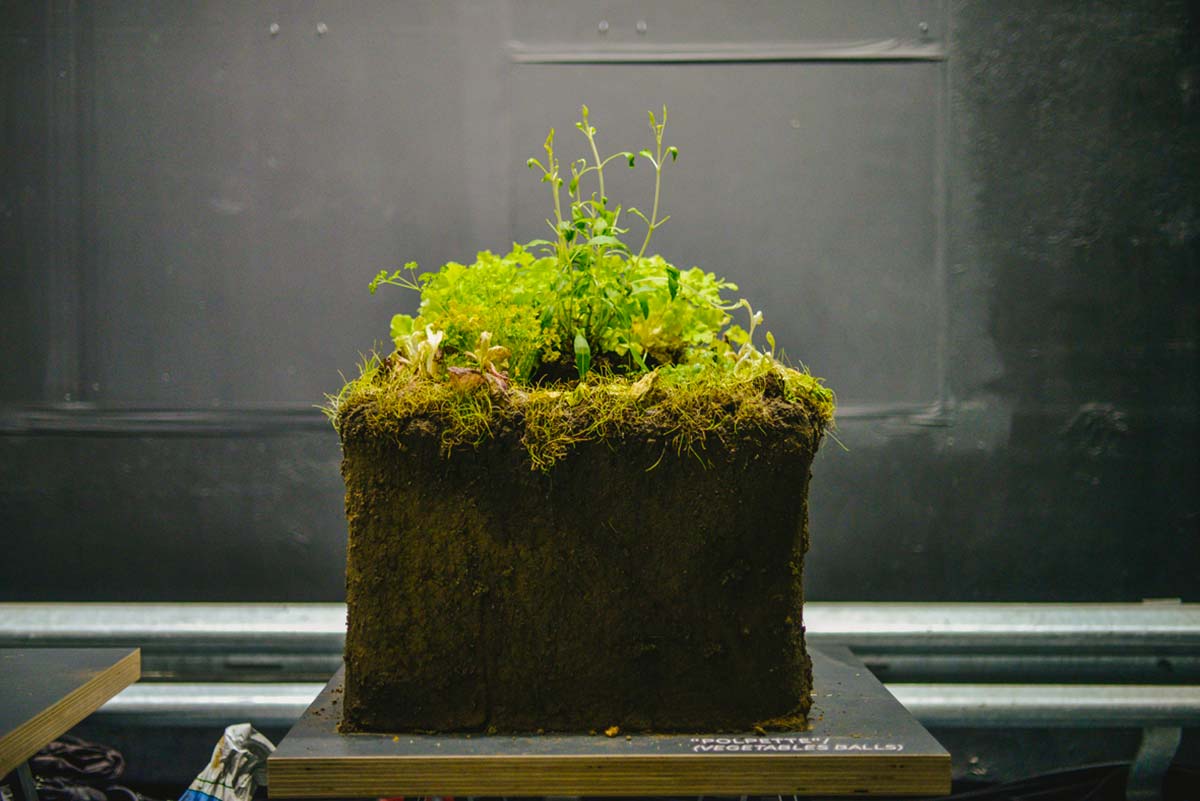
The trajectory can be summed up: starting from food contextualized in an unusual setting, passing through the opening of a gallery that becomes a happening, crossing reflections on the tools linked to the action of preparing food and engagement in that process, and reaching the more mysterious proximity to the theme of nature, an image of food that becomes abstract material, to the point of not even seeming like food.
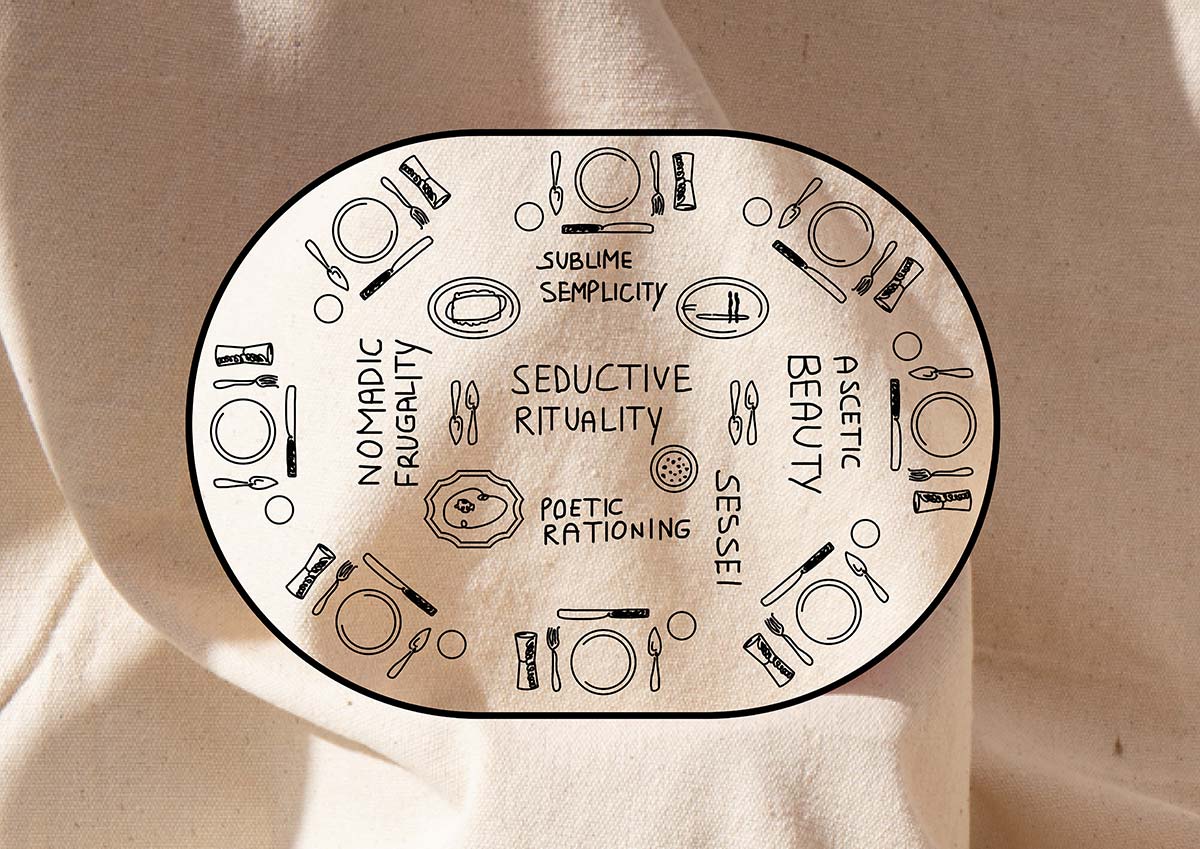
And now? What’s next? The manifesto written for Dezeen in 2020 seems to outline the future path of Francesca Sarti and her group in constant transformation. “Marcus Fair called me and asked me, ‘how do you imagine your sector could evolve in the next 15 years?,’” Francesca recalls. “To answer this question, I wrote The Beauty of Scarcity, a short essay that suggests a return to the essential, getting accustomed to scarcity and changing our habits of consumption in the direction of greater moderation.”
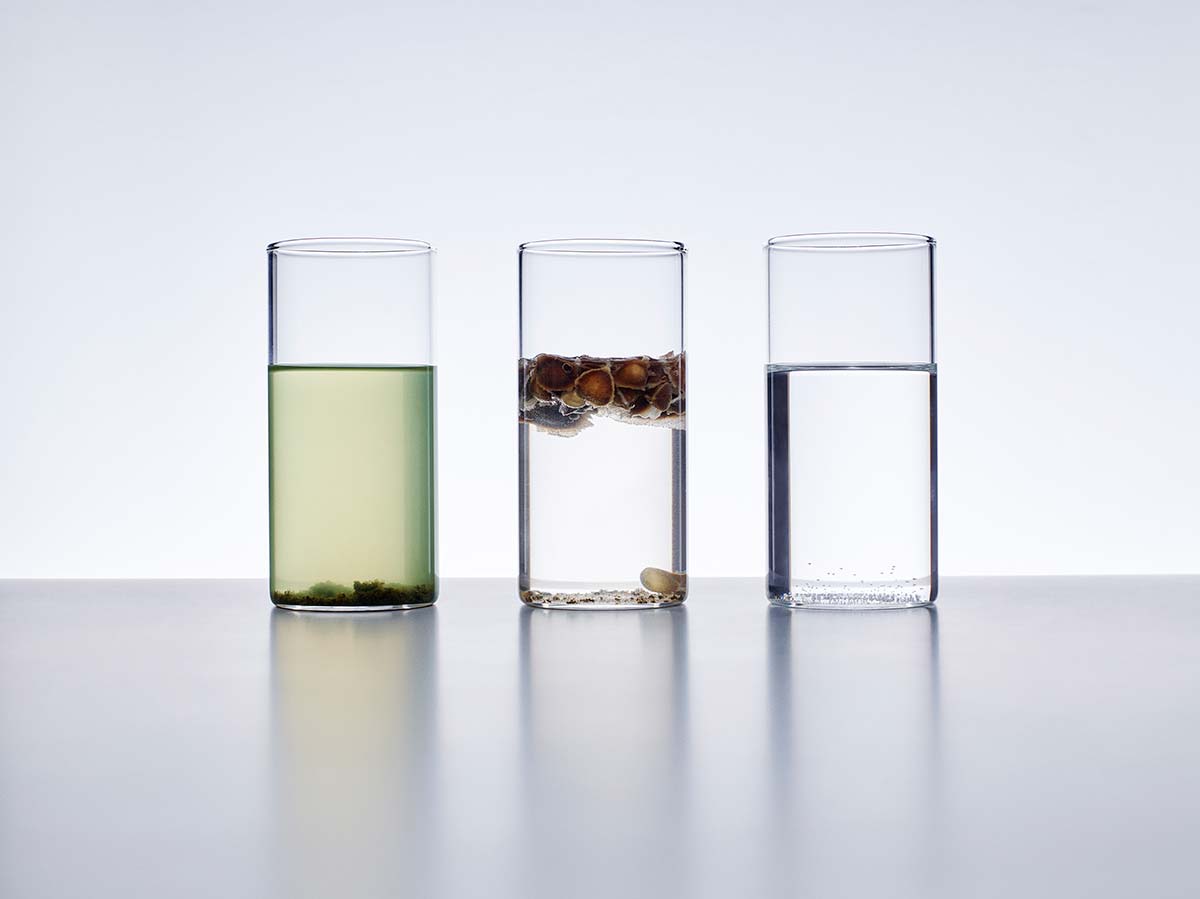
Sarti continues: “in recent years this return to the art of the table has led to a certain visual abundance. Working with Arabeschi I have always moved with caution, my taste is more like Margiela, though in certain projects there has been a bit of opulence.
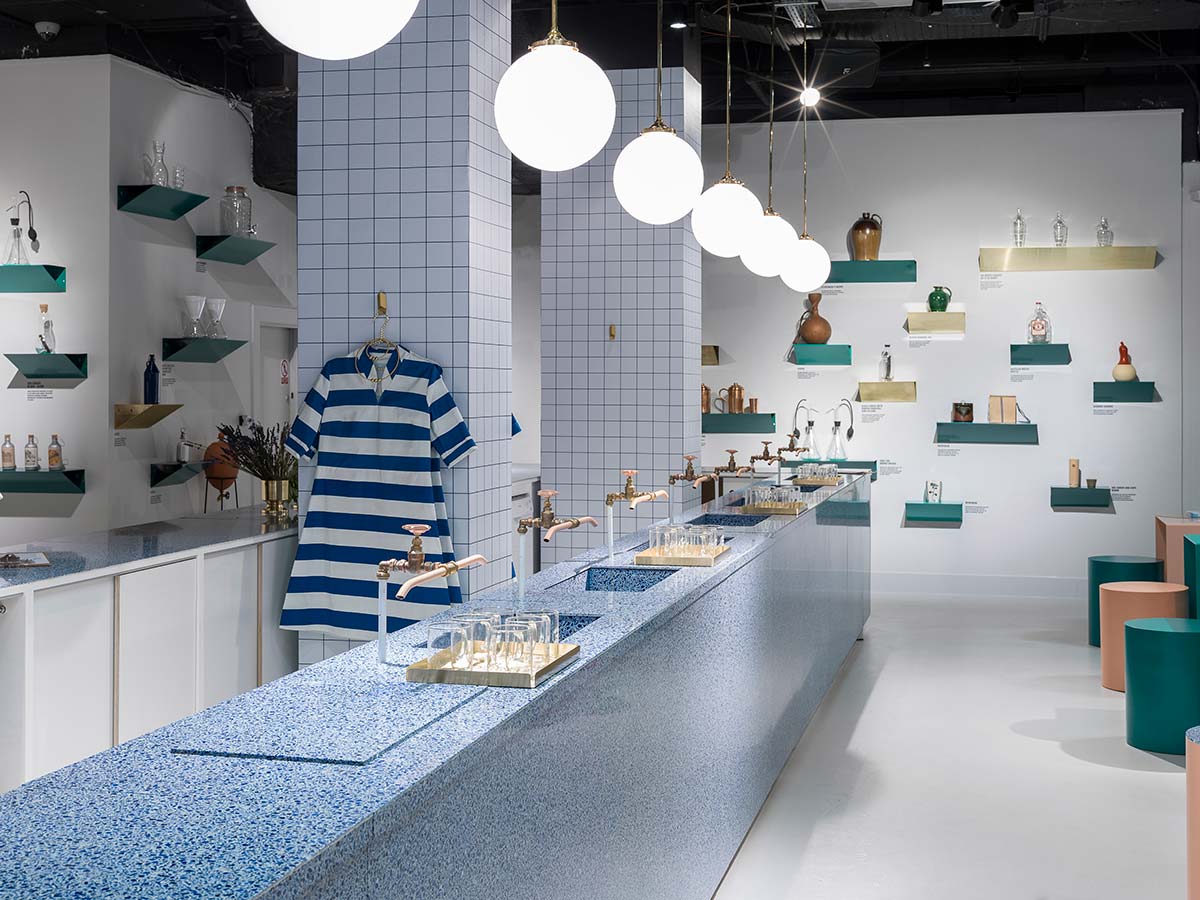
I have always tried to be cautious, because abundance contains the root of waste,” she concludes. “So I always ask myself if it is possible not to lose this sense of pleasure, which is a must if you are working with food. How to allow these opportunities for pleasure to preserve a more restrained meaning. Though I have always focused on minimalism, Arte Povera, or do-it-yourself, on dynamics of anti-opulence, I have still not managed to make many projects in which this idea stands out.”
Though in our everyday life we are accustomed to the celebration of abundance, we have a real need for projects capable of combining pleasure and sustainability.







